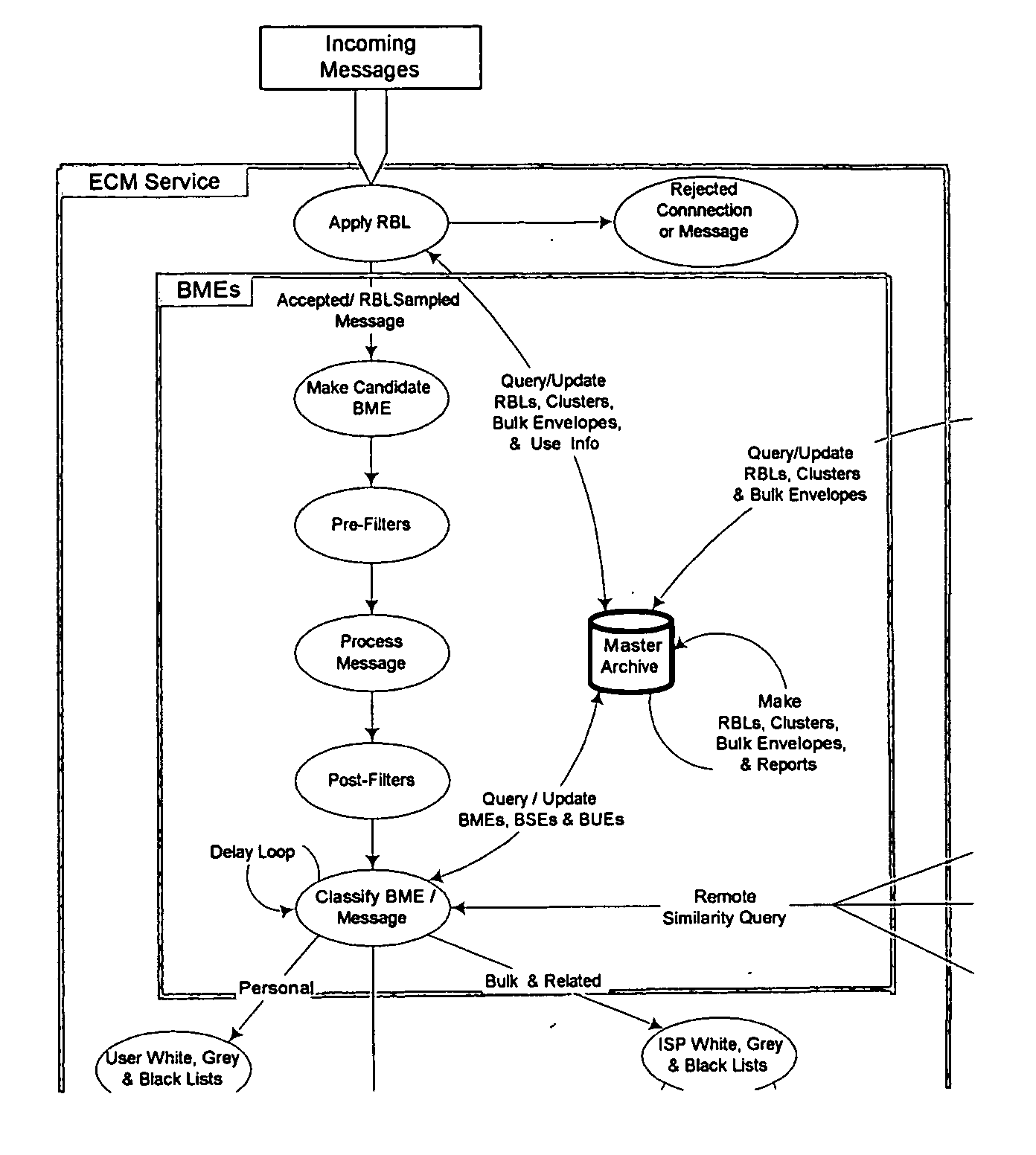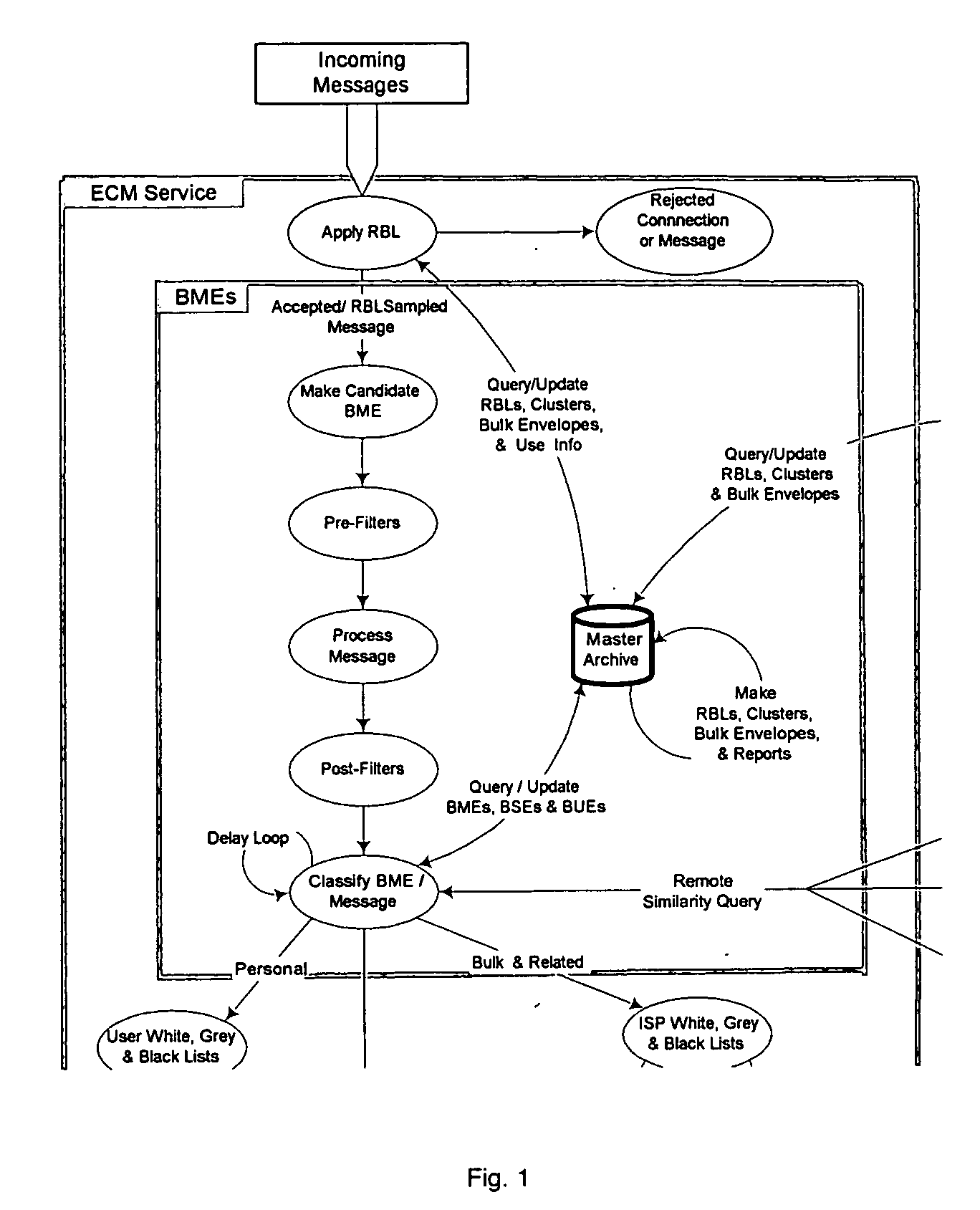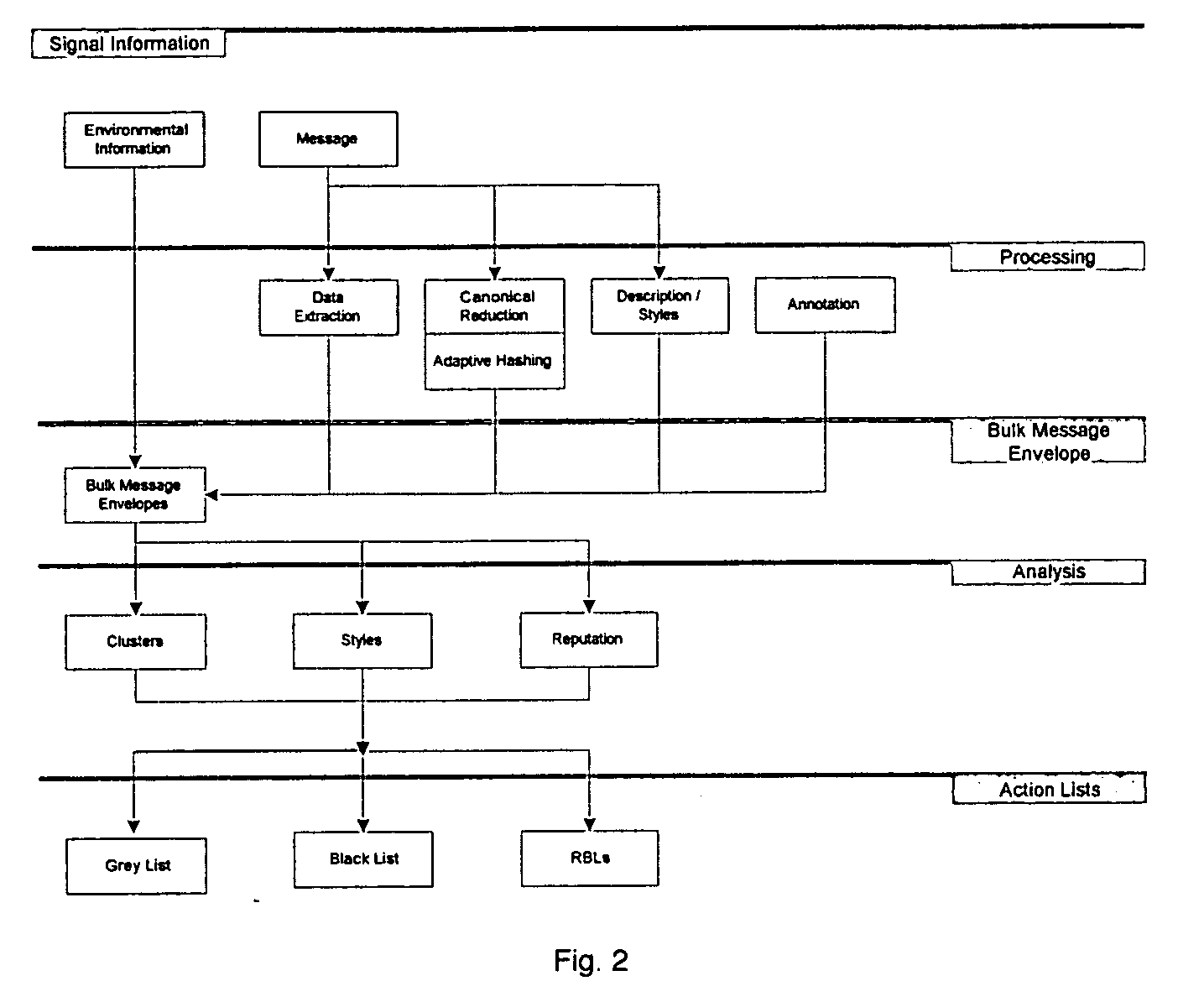System and method for the classification of electronic communication
a technology of electronic communication and classification system, applied in the field of information delivery and management in a computer network, can solve the problems of limiting the usefulness of filters, current bayesian filters and classification systems, and inability to work well
- Summary
- Abstract
- Description
- Claims
- Application Information
AI Technical Summary
Benefits of technology
Problems solved by technology
Method used
Image
Examples
Embodiment Construction
[0072] What we claim as new and desire to secure by letters patent is set forth in the following claims.
[0073] We define Electronic Communications Modality (ECM), in this context as referring to any means or process of digital communications that can be achieved, assisted, or enhanced by means of digital messages using a communications protocol appropriate to the particular communications modality.
[0074] ECM service, in this context, is meant to refer to some embodiment of software and / or hardware machine that permits for the exchange of digital messages using a communications protocol appropriate to the ECM; and optionally log information regarding the machine's execution.
[0075] The present invention comprises an ECM service, as shown in FIG. 1, that can connect to other ECM services via appropriate communications protocols for the exchange of electronic messages. Some ECMs and / or ECM services may require establishment of a connection prior to message exchange. This view of ECM ...
PUM
 Login to View More
Login to View More Abstract
Description
Claims
Application Information
 Login to View More
Login to View More - R&D
- Intellectual Property
- Life Sciences
- Materials
- Tech Scout
- Unparalleled Data Quality
- Higher Quality Content
- 60% Fewer Hallucinations
Browse by: Latest US Patents, China's latest patents, Technical Efficacy Thesaurus, Application Domain, Technology Topic, Popular Technical Reports.
© 2025 PatSnap. All rights reserved.Legal|Privacy policy|Modern Slavery Act Transparency Statement|Sitemap|About US| Contact US: help@patsnap.com



